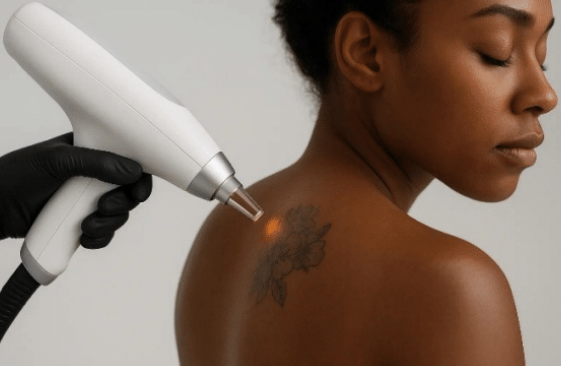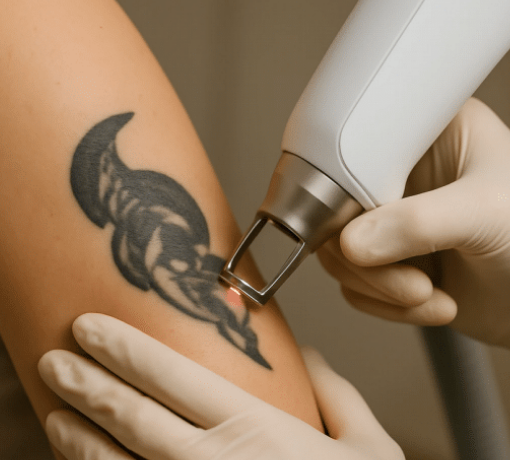Tattoo removal: Which skin types require extra caution?

You want a clear, even result with minimal downtime. That is achievable when technology, skin science and planning work together. One factor decides much of that outcome before the first pulse lands on your skin: your skin type. At NDN.LASER we tailor every plan for tattoo removal to the way your skin behaves, not to a generic protocol. We also correct for real life, such as sunlight, work schedules and medication. This guide explains which skin types call for extra care, why that is true, and how careful decisions keep progress steady. For search clarity, we will also reference tattoo verwijderen where relevant, since many people misspell the term when looking for help.
Why skin typing matters more than the device
Laser energy interacts with ink, but it also interacts with melanin, the pigment that gives your skin its colour. More melanin means more competition for the laser’s energy and a higher chance of unwanted darkening or lightening after treatment. That is why a precise Fitzpatrick classification and a review of tanning history are the first steps in responsible tatto ramoval planning. When we know how your skin absorbs light, we can set wavelength, fluence, spot size and session spacing to clear ink while protecting tone. The safest tatto ramoval begins with measurement, not guesswork.
Fitzpatrick I-II: Light skin that burns easily
If your skin is very fair, freckles easily and tends to burn, the epidermis contains less melanin, which can make energy targeting more straightforward. Even so, the barrier can be reactive. Starting with conservative fluence, using larger spot sizes for controlled depth and giving the skin enough time to recover reduce the chance of irritation. With this group, tatto ramoval should feel methodical rather than fast. You benefit from steady gains, consistent sun protection and honest discussion about intervals that let the skin rebuild before the next session.
Fitzpatrick III-IV: Medium tones that tan readily
Medium skin types tan noticeably between seasons. After holidays or outdoor weekends, melanin levels can be higher than they were in winter. Treating a tanned area increases the risk of post-inflammatory hyperpigmentation. For these clients, tatto ramoval adapts to the calendar. We may extend the interval after sun, perform a test spot and step settings gradually. The goal is even clearance without colour shifts. When you protect the skin between visits and arrive without a fresh tan, you shorten the total journey.
Fitzpatrick V-VI: Richly pigmented skin
Darker skin contains more epidermal melanin, which competes with the tattoo for energy. The task is to fracture ink while leaving melanocytes undisturbed. That calls for specific wavelengths, careful fluence selection and strict sun control. You can expect more emphasis on test spots and a slower progression of settings. With the right plan, tatto ramoval remains effective and respectful of your tone. Patience is the investment that pays off in smooth, even results.
Beyond Fitzpatrick: Behaviours that change risk
Skin type is one dimension. There are patterns and conditions that call for extra caution:
- A history of pigment shifts such as melasma or strong tanning patterns. Your tatto ramoval plan should include stricter sunscreen habits, conservative settings and longer observation.
- A tendency toward keloid or hypertrophic scarring. We avoid overlap, keep fluence lower and monitor areas under tension such as shoulders and chest.
- Active dermatitis, eczema or psoriasis. We only treat stable skin because flares make responses less predictable.
- Medications that affect light sensitivity or healing. Tell us about antibiotics, acne treatments and herbal supplements so we can time sessions safely.
- Recent sun or self-tan on the treatment site. If the area is tanned, waiting protects your long-term result.
Test spots: Small trials that prevent big problems
For higher-risk profiles, a test spot is not optional. We treat a tiny area with conservative parameters, then review your response after two to four weeks. That feedback guides wavelength, fluence and spot size for the wider field. It turns tatto ramoval from prediction into observation. A few square millimetres can save you a setback and build confidence in the chosen settings.

Location on the body and circulation
Hands, feet and ankles often clear more slowly than shoulders or the upper back because of circulation and lymphatic drainage. If your tattoo sits on an extremity, tatto ramoval may require longer intervals to let your body clear ink fragments. Setting this expectation early removes pressure later and helps you judge progress by the right standard for the location.
Scheduling that respects biology
Good timing is not about filling a diary. It is about aligning sessions with recovery and with your life. Book visits outside peak sun months when possible. Keep the 48 hours around treatment quiet and avoid red-eye flights, heavy training or hot baths. Sleep, hydration and protein intake support lymphatic clearance. These simple habits help tatto ramoval move forward without unnecessary irritation or delays.
Aftercare that protects tone
Cooling the area in the first hours reduces swelling. Keep the site clean and dry. Once the surface is intact, a bland, fragrance free moisturizer supports barrier repair. Avoid friction from tight clothing. Pause saunas, hot tubs and intense workouts for one to two days. Use broad spectrum sunscreen every day, especially if your skin tans easily. Careful aftercare keeps tatto ramoval on track and reduces the chance of uneven colour in the weeks after treatment.
When waiting is the safest choice
There are moments when postponing is the correct clinical decision. A fresh tan or sunburn, an active skin flare, new photosensitising medication, pregnancy or a local infection are all signals to delay. Short pauses protect long term results. A clinic that advises you to wait is safeguarding your outcome, not wasting your time. The most reliable tatto ramoval puts skin health first, even if that adds one extra session overall.
Setting expectations with evidence, not hope
Session counts vary with ink colour, density, depth, body location and your skin’s behaviour. Black ink usually responds faster than resistant hues like teal or light green. Cover ups often contain layered pigments that clear at different speeds. At NDN.LASER we document each visit with consistent lighting so you can see change clearly. That record keeps tatto ramoval transparent and helps you stay motivated when day-to-day differences feel small.
Why choose NDN.LASER for higher risk skin profiles
Our method is simple. Measure first, then treat. During consultation we classify your skin, map pigments, review health history and agree on intervals that respect recovery. If a test spot is wise, we do it. Parameters are adjusted deliberately from session to session. You leave with a plan, clear aftercare and realistic milestones. This is tatto ramoval done with precision and respect for your skin.
The bottom line
Skin type does not decide whether you can clear a tattoo. It decides how you should proceed. When you combine accurate skin typing, careful parameter choices, disciplined sun protection and practical scheduling, you get safer progress and a smoother finish. If you are considering tatto ramoval and want the most cautious path for your skin, book a consultation at NDN.LASER. We will design a plan that fits your biology and your calendar, so you can move toward an even, confident result at a steady pace.
Let yourself be guided by the expertise of NDN.LASER for a lasting solution.





